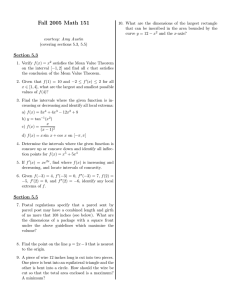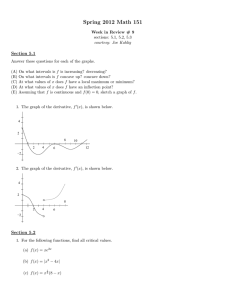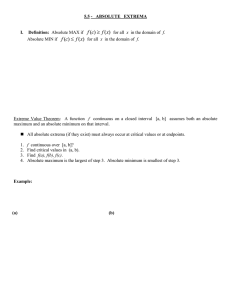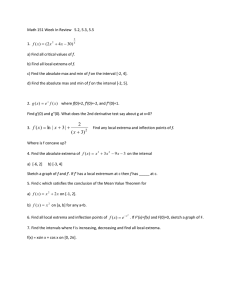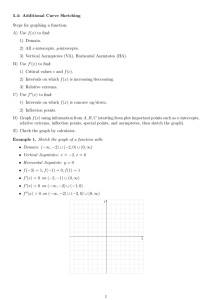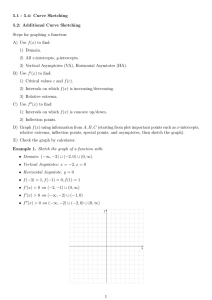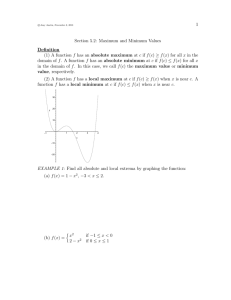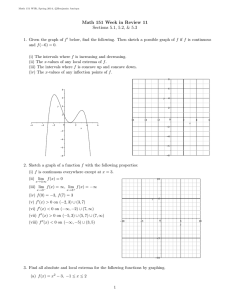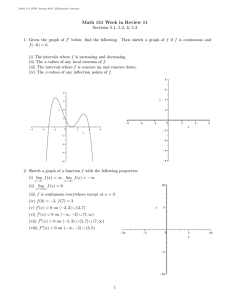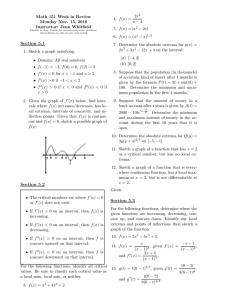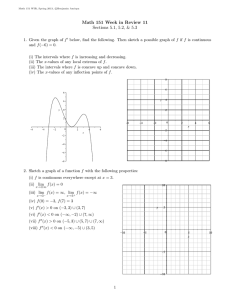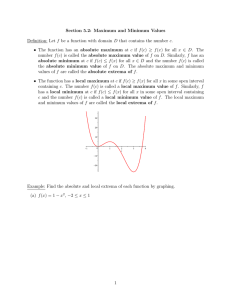4. Find the absolute and local extrema for the follow-
advertisement
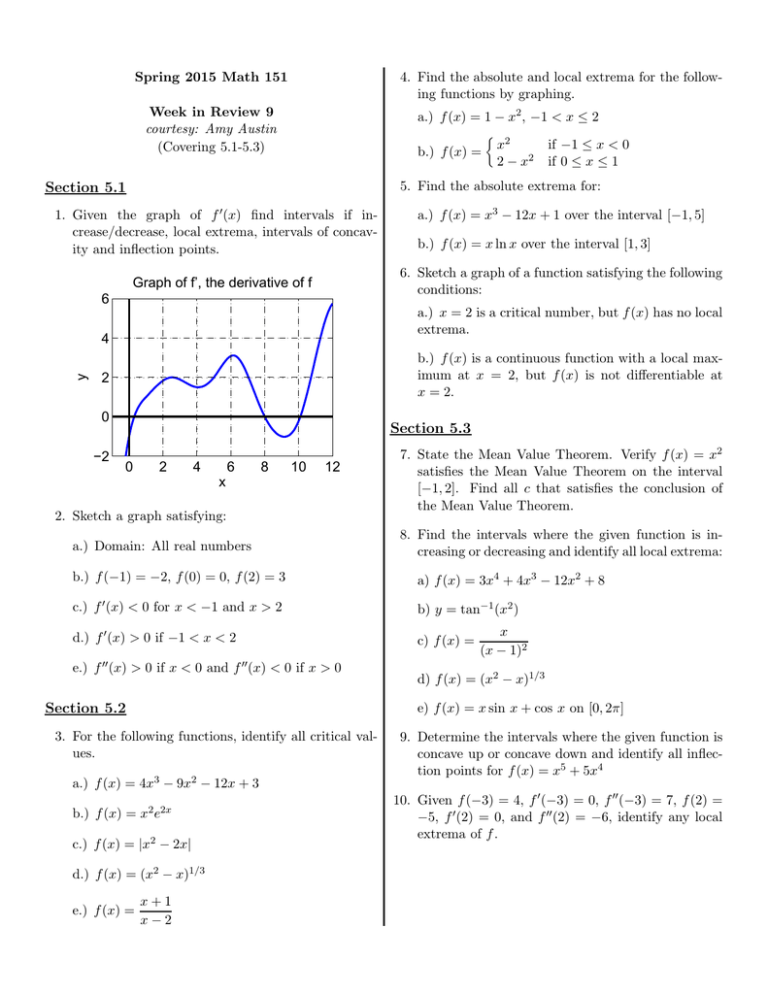
4. Find the absolute and local extrema for the following functions by graphing. Spring 2015 Math 151 Week in Review 9 courtesy: Amy Austin (Covering 5.1-5.3) a.) f (x) = 1 − x2 , −1 < x ≤ 2 b.) f (x) = 1. Given the graph of f ′ (x) find intervals if increase/decrease, local extrema, intervals of concavity and inflection points. if −1 ≤ x < 0 if 0 ≤ x ≤ 1 a.) f (x) = x3 − 12x + 1 over the interval [−1, 5] b.) f (x) = x ln x over the interval [1, 3] 6. Sketch a graph of a function satisfying the following conditions: Graph of f’, the derivative of f 6 a.) x = 2 is a critical number, but f (x) has no local extrema. 4 y x2 2 − x2 5. Find the absolute extrema for: Section 5.1 b.) f (x) is a continuous function with a local maximum at x = 2, but f (x) is not differentiable at x = 2. 2 0 −2 Section 5.3 0 2 4 6 8 10 12 x 2. Sketch a graph satisfying: a.) Domain: All real numbers 7. State the Mean Value Theorem. Verify f (x) = x2 satisfies the Mean Value Theorem on the interval [−1, 2]. Find all c that satisfies the conclusion of the Mean Value Theorem. 8. Find the intervals where the given function is increasing or decreasing and identify all local extrema: b.) f (−1) = −2, f (0) = 0, f (2) = 3 a) f (x) = 3x4 + 4x3 − 12x2 + 8 c.) f ′ (x) < 0 for x < −1 and x > 2 b) y = tan−1 (x2 ) d.) f ′ (x) > 0 if −1 < x < 2 c) f (x) = e.) f ′′ (x) > 0 if x < 0 and f ′′ (x) < 0 if x > 0 3. For the following functions, identify all critical values. a.) f (x) = 4x3 − 9x2 − 12x + 3 x2 e2x c.) f (x) = |x2 − 2x| d.) f (x) = (x2 − x)1/3 e.) f (x) = d) f (x) = (x2 − x)1/3 e) f (x) = x sin x + cos x on [0, 2π] Section 5.2 b.) f (x) = x (x − 1)2 x+1 x−2 9. Determine the intervals where the given function is concave up or concave down and identify all inflection points for f (x) = x5 + 5x4 10. Given f (−3) = 4, f ′ (−3) = 0, f ′′ (−3) = 7, f (2) = −5, f ′ (2) = 0, and f ′′ (2) = −6, identify any local extrema of f .
